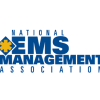Updated June 2015
EMS, interfacility critical care transport teams and EDs need a “systematic approach to pain management” for children that includes the appropriate use of pain medications and sedation to minimize distress for patients and their families, according to a clinical report in the November 2012 issue of Pediatrics.
Though managing children and infants’ pain in emergency settings is vital, prehospital providers may have difficulty assessing pain, may be unfamiliar with new medications and techniques to manage pain, and may be reluctant to give pain medications for fear of adverse effects. “Prehospital EMS providers typically receive relatively little pain management instruction,” the report says.
The report recommends developing pain assessment and management protocols specifically for prehospital EMS providers, while EMS medical directors should provide more training in pain management for kids. Among the other findings:
Several adult studies and one pediatric trial show that opiates and tramadol hydrochloride can be used in prehospital protocols to decrease pain scores without causing respiratory depression.
Transmucosal medications or inhaled nitrous oxide can offer pain control without needing an IV.
Some EMS systems have implemented a “toolbox” of distraction equipment to help relax an anxious, uncomfortable child.
“Adequate pain assessment is essential for pain relief and should begin on entry into the EMS and continue through discharge of the child from the ED,” the authors conclude. “Multiple modalities are now available that allow pain and anxiety control for all age groups.”
Bystander hands-only CPR more effective than CPR with mouth-to-mouth
Hands-only CPR performed by bystanders saves more lives than CPR with mouth-to-mouth breathing, according to a nationwide Japanese study of 1,300 people who had a cardiac arrest from 2005 to 2009.
Nearly 41 percent of people who had witnessed out-of-hospital cardiac arrests and who received compression-only CPR with public-access defibrillation survived at least 30 days without severe neurological problems. That compares to 33 percent of those who received conventional CPR (which includes mouth-to-mouth) and defibrillation, according to researchers at Kyoto University Health Service. The study was published online Dec. 10, 2012, in Circulation.
Chest compressions with rescue breathing remains the standard for trained rescuers, but American Heart Association recommendations for untrained bystanders changed in 2010 to hands-only CPR. These findings would likely apply to the U.S., where AEDs are widespread, according to the American Heart Association.
Epinephrine underutilized by paramedics for allergic reactions
Paramedics aren’t giving potentially life-saving epinephrine as often as they should, a new study suggests. Researchers from Broward Health in Fort Lauderdale, Fla., reviewed 92 patient care reports involving allergic reactions, of which 52 were anaphylaxis. Fifteen percent of patients with anaphylaxis were treated with epinephrine, while 9 percent of patients not suffering from anaphylaxis received epinephrine.
Paramedics need more training on when and how to use epinephrine, according to the study, which was presented Nov. 9, 2012, at the American College of Allergy, Asthma and Immunology annual meeting in Anaheim, Calif.
Frail adults more likely to have ‘food insufficiency’
When responders are called to the home of frail elderly, they may want to ask to take a peek in the fridge. A study of 4,700 Americans ages 60 and older from around the United States found those who are frail—defined as having limited mobility and low levels of physical activity—are five times more likely to report that they sometimes or often don’t have enough to eat. EMS can refer patients they suspect of having “food insufficiency” to Meals on Wheels, Feeding America (which maintains a list of food banks) or other elder services, recommend researchers from Oregon State University. The study was published online Nov. 1, 2012, in the British Journal of Nutrition.
Heart Attacks More Deadly for Women
Women having a heart attack are more likely to die than men having a heart attack, likely because women tend to delay seeking treatment, according to researchers from the Centre Hospitalier Universitaire in Rennes, France, and colleagues.
Researchers analyzed data from a prospective registry of 5,000 STEMI (ST-segment elevation myocardial infarction) patients. About 9 percent of women with STEMI died in the hospital, compared to 4.4 percent of men. Women also had a significantly longer median delay between the onset of symptoms and calling for medical assistance (60 vs. 44 minutes), researchers reported at the Acute Cardiac Care Congress meeting in Istanbul, Turkey, in October 2012. Women also had a longer delay between hospital admission and reperfusion (45 vs. 40 minutes).
Researchers told MedPage Today that women may hold off on calling for an ambulance, mistakenly believing MI is a “male problem.”












